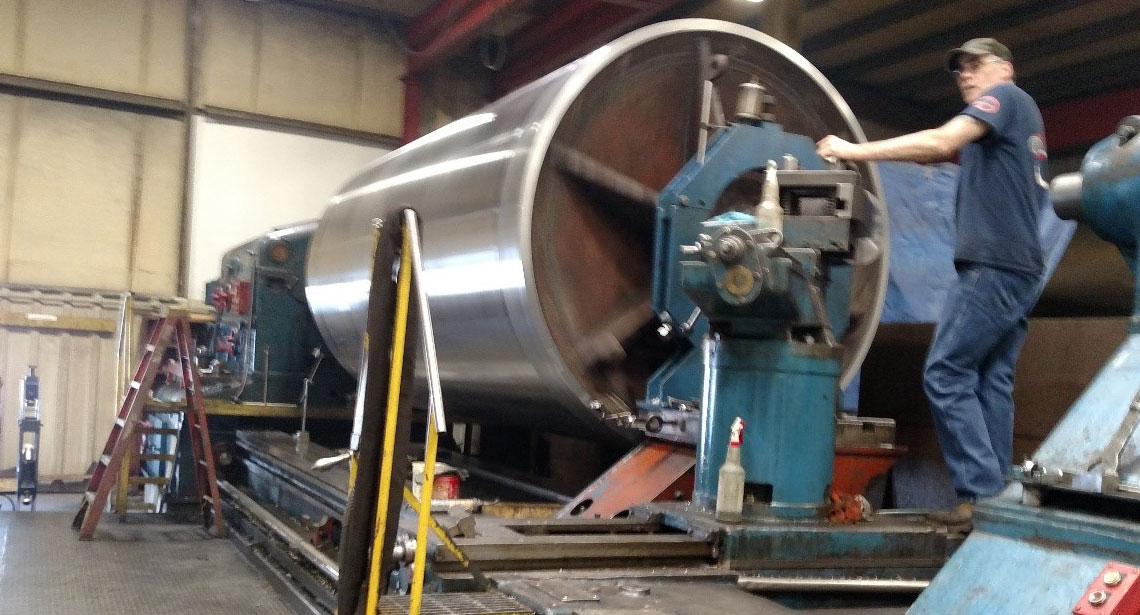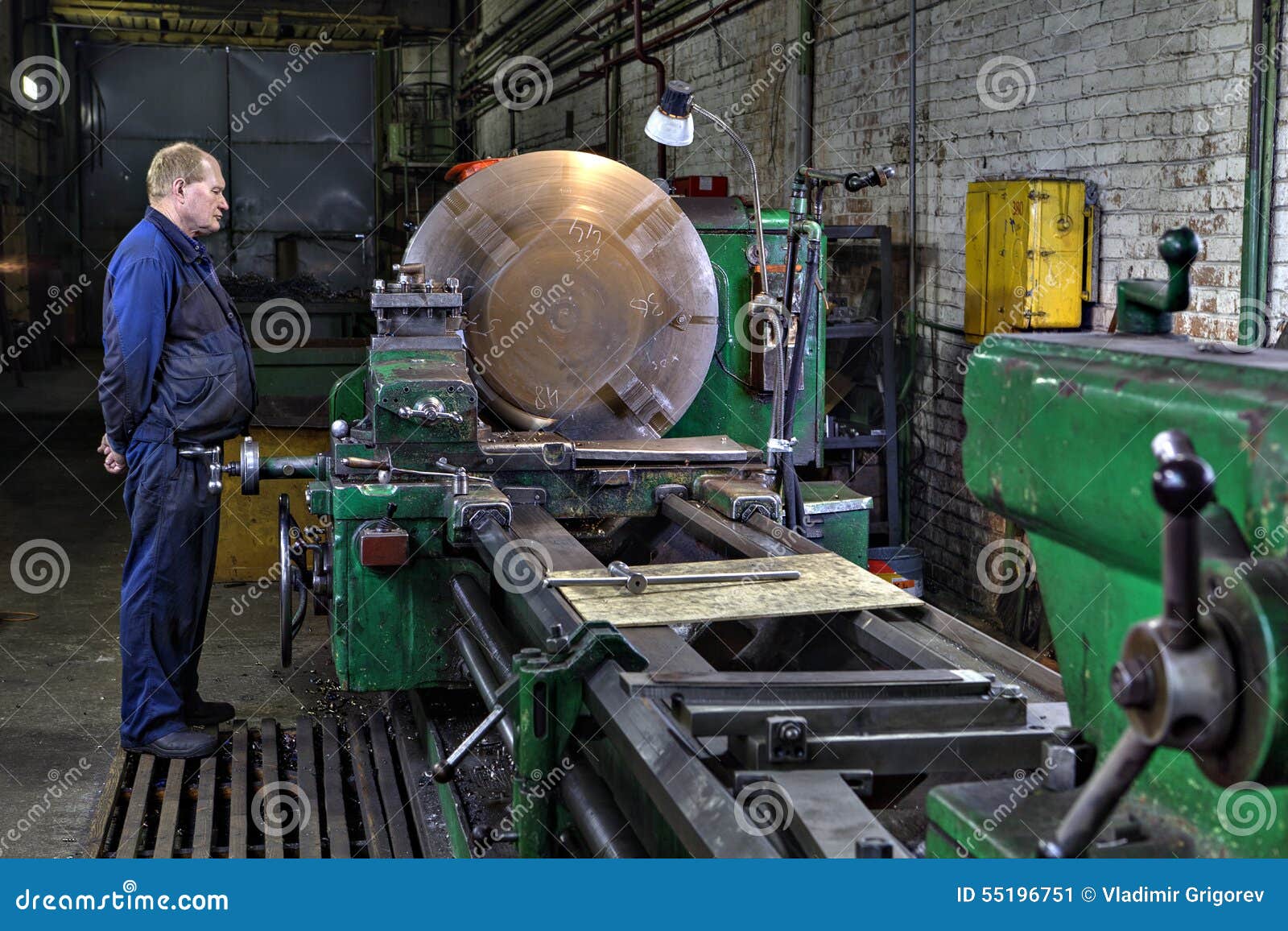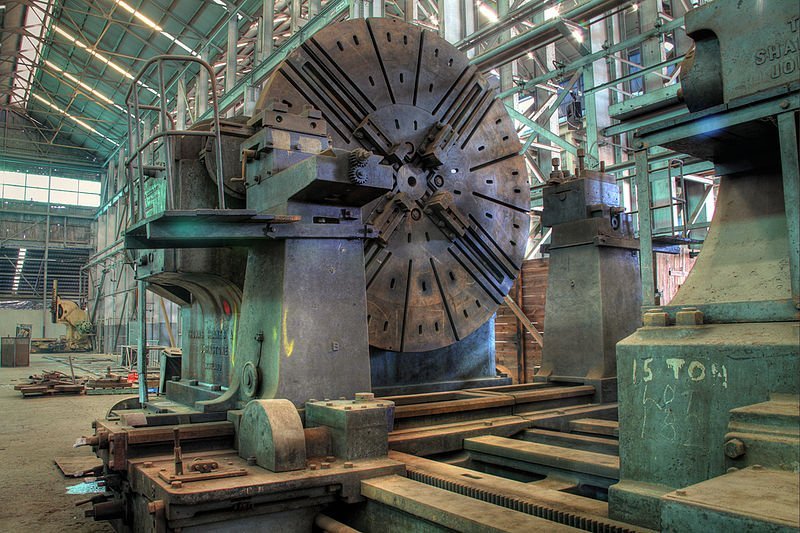Table of Contents
A large metal turning lathe is a machine tool used to shape metal by rotating it against a cutting tool. It is essential for precise metalworking.
Large metal turning lathes are vital in the manufacturing industry. They create precise cylindrical parts by rotating metal workpieces against a cutting tool. These machines are crucial in producing components for various sectors, including automotive, aerospace, and heavy machinery. Large lathes handle bigger workpieces, offering enhanced capabilities for industrial applications.
They ensure high accuracy and efficiency, which are paramount for meeting strict engineering standards. Modern lathes come with advanced features like computer numerical control (CNC), further improving productivity and precision. Investing in a large metal turning lathe can significantly boost manufacturing capabilities and ensure high-quality outputs.
Introduction To Large Metal Turning Lathes
Large metal turning lathes are crucial for making metal parts. These machines shape metal by rotating it against a cutting tool. They ensure precision and quality in manufacturing. Industries like aerospace, automotive, and heavy equipment rely on them. These machines handle large, heavy metal pieces. They produce parts quickly and accurately. This efficiency boosts productivity and reduces costs.
Manual lathes required skilled operators. They had to control every movement. This process was slow and error-prone. The introduction of Computer Numerical Control (CNC) changed everything. CNC lathes automate the cutting process. They follow programmed instructions with high precision. This reduces human error and speeds up production. CNC lathes can work 24/7 without fatigue. They have revolutionized modern manufacturing.
Essential Components Of Metal Turning Lathes
The Main Spindle is the heart of the lathe. It spins the workpiece. Spindle speed is crucial. High speed ensures smooth cuts. Low speed is for heavy cuts. Spindle power must match the task. A strong spindle handles tough materials.
The Tool Turret holds multiple tools. It rotates to switch tools. This saves time. Each tool has a specific job. The turret allows fast, efficient changes. Accuracy is key for quality work. Proper turret alignment is essential.
The Tailstock supports long workpieces. It prevents bending. The tailstock can hold drills too. Adjusting the tailstock is easy. It slides along the bed. Lock it in place for stability. Proper use ensures precision.
Types Of Metal Turning Lathes
Horizontal lathes are common in many workshops. They use a horizontal spindle. This design is great for long, cylindrical parts. Vertical lathes have a vertical spindle. They are ideal for heavy, large-diameter parts. Horizontal lathes are easier to set up. Vertical lathes save space and handle heavy loads well. Both types offer unique advantages.
Specialized lathes are designed for intricate work. They can create complex shapes and patterns. CNC lathes are controlled by computers for precise work. Swiss lathes are perfect for small, detailed parts. Multi-spindle lathes can handle multiple tasks at once. These specialized lathes make complex jobs easier.
Materials And Applications
Large metal turning lathes offer precision in shaping and cutting metals for industrial applications. Essential for manufacturing, these machines handle diverse materials with high accuracy.
Metals Suited For Lathe Machining
Large metal turning lathes work well with steel. Aluminum is also a common choice. Brass and copper are easy to shape. Titanium is strong and light. Stainless steel resists rust. Cast iron is very hard. Each metal has unique uses.
Industries Relying On Precision Turning
The automotive industry needs precision parts. The aerospace sector demands high accuracy. Medical devices must be exact. Oil and gas industries use turned parts. The electronics field requires small, precise components. Manufacturing relies on these machines too. Many industries trust lathe machining.
Precision Engineering And Tolerances
Large metal turning lathes excel in precision engineering, ensuring tight tolerances and superior accuracy. These machines handle complex tasks, producing high-quality metal components with minimal errors.
Achieving Micrometer Accuracy
Large metal turning lathes can achieve micrometer accuracy. This means they can make very tiny adjustments. Precision engineering is key in this process. Engineers use special tools and techniques. They measure and cut metal to exact sizes. This helps in creating high-quality parts. It’s important to have a steady hand and a sharp eye.
Quality Control In Lathe Operations
Quality control is very important in lathe operations. Regular checks ensure the machine is working well. Technicians often use gauges and calipers. These tools measure the parts. Any mistakes must be fixed quickly. Keeping the lathe clean also helps. A clean machine works better and lasts longer. Proper training is essential for good quality control.

Credit: www.winpretec.com
Advancements In Lathe Technology
CNC lathes have transformed metal turning. These machines are now more precise and efficient. They allow for complex designs that were once impossible. Computer controls make the process faster. It reduces human error and improves accuracy. CNC lathes are now used in many industries. They are found in automotive, aerospace, and manufacturing sectors.
Automation has revolutionized metal turning. Robots handle repetitive tasks with ease. This boosts productivity and lowers costs. Automated systems ensure consistent quality. They minimize downtime and increase output. Many factories now use automated lathes. This trend is expected to grow rapidly in the coming years.
Operating A Large Metal Turning Lathe
Proper training is very important. Workers must know how to use the lathe. They should wear safety gear. Safety glasses and gloves protect workers. The lathe must be in good condition. Regular checks keep it safe. Always follow the manufacturer’s guidelines. Do not take shortcuts. Safety should always come first.
Keep the lathe clean. A clean lathe works better. Use the right cutting tools. Sharp tools give better results. Keep tools sharp. Use the right speed settings. Different metals need different speeds. Do not rush the work. Take your time. It is better to be slow and precise. Always measure your work. This makes sure it is correct.

Credit: www.amazon.com
Future Trends In Metal Turning
Green manufacturing is becoming more important. Factories aim to reduce waste and save energy. Eco-friendly practices are being adopted. Recycled materials are used more often. This helps to protect our planet.
New materials are changing the industry. Lightweight metals like titanium are popular. They are strong and durable. Composite materials are also used. These materials have special properties. They can improve performance and reduce costs.

Credit: www.dreamstime.com
Frequently Asked Questions
What Type Of Lathe Was Developed To Turn Particularly Large Or Heavy Workpieces?
A heavy-duty lathe, often called an industrial lathe, is designed to turn large or heavy workpieces. These lathes provide robust construction and powerful motors for handling substantial loads.
What Is A Giant Lathe?
A giant lathe is a large, powerful machine tool used for shaping and machining large metal or wood workpieces.
Can A Metal Lathe Be Used For Woodturning?
Yes, a metal lathe can be used for woodturning. Ensure to clean it thoroughly before switching materials. Use proper tools and safety measures.
What Is The Maximum Diameter That Can Be Turned On The Lathe Machine?
The maximum diameter a lathe machine can turn depends on the specific model. Generally, it ranges from 6 to 24 inches. Always check the manufacturer’s specifications for exact details.
Conclusion
Mastering a large metal turning lathe can greatly enhance your machining capabilities. These powerful machines ensure precision and efficiency. Investing in a quality lathe supports long-term success in various industries. Stay updated with maintenance tips to prolong its lifespan. Embrace the benefits of a large metal turning lathe for optimal results.
